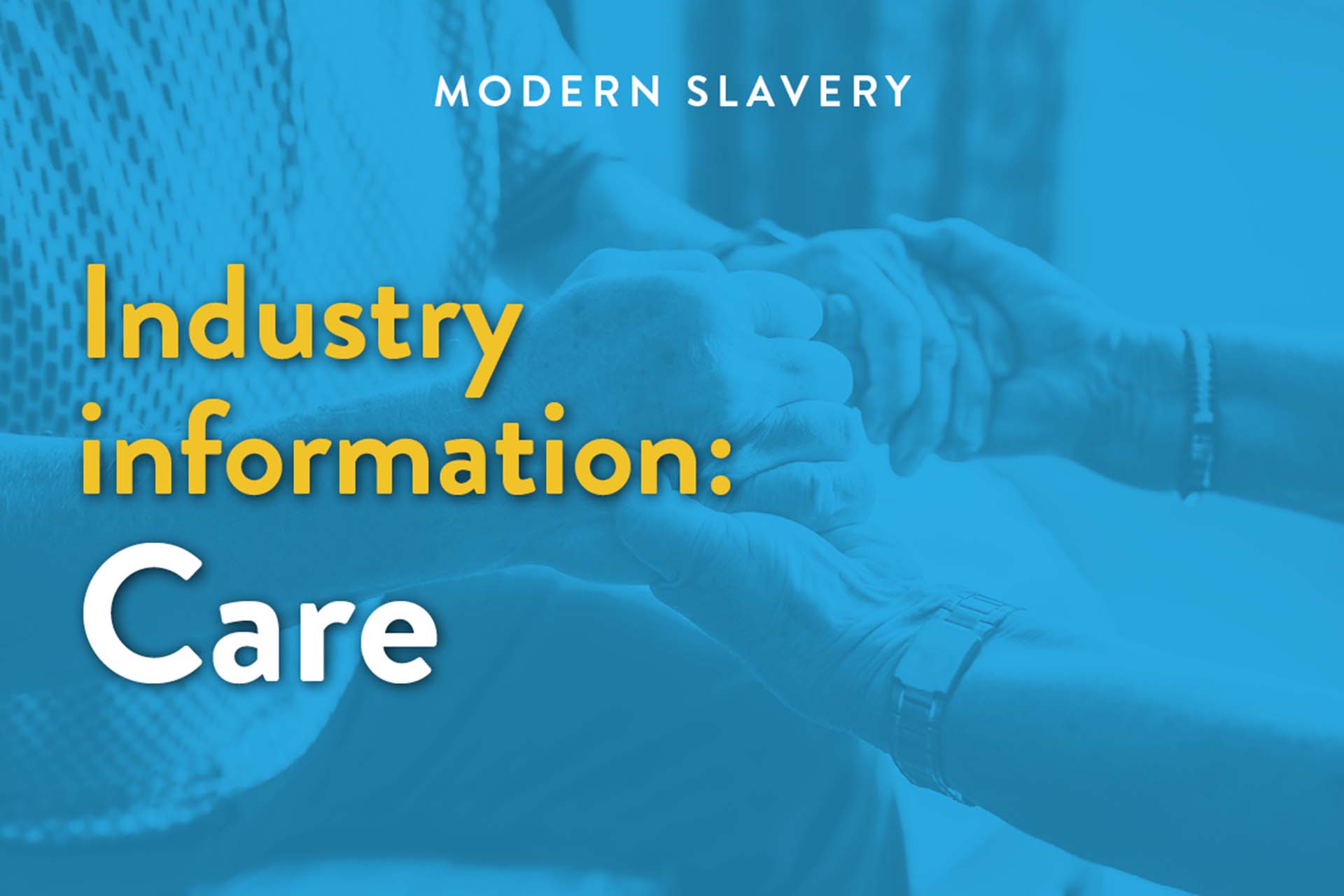
Wrapping up our series to understand more about the situation in Leicester’s garment factories and to educate others, we are looking at the care sector. This is a sector that has been identified as high risk of modern slavery. We look at why.
Those in care work fill the vital role of supporting our sick, elderly and disabled. However the job itself can be physically and emotionally demanding and has been labelled as at high risk of exploitation. There are an estimated 1.85 million people working in the care sector. The number of older people with care needs is likely to rise by more than 60% in the next 20%, which means this sector will only increase in size and relevance.
Understanding the risks:
There are characteristics of the care sector (not unlike many other sectors), which make it vulnerable to exploitative practice:
- There is a dependence on “low-skilled” female migrant workers. One fifth of the workforce are migrants and 88% are women. Migrant workers are vulnerable to exploitation if they do not know the language, their rights in the country or are tied to their employer through work visas. Women often face discrimination in their work.
- Work in the care sector comes with low pay, poor status, unrealistic targets and inconsistent training.
- An independent report looking at the industry found that 160,000-220,000 workers in the sector are paid less than the national minimum wage; one fifth of the workers are on zero-hour contracts, which are known to cause in-work poverty.
- A large part of the sector is outsourced to third-party agencies. And there is no licensing framework around the hiring of care home staff.
- Similar to the hospitality sector, there is evidence of increased pressure for workers to be “self-employed” which means they end up missing out on many of the benefits (i.e. holiday pay, sick pay, job security) that come with being a direct employee.
- For those working in residential care, there are cases of workers being charged excessive rates for their accommodation, which becomes hard to cover with such low pay, creating a situation of debt bondage.
To learn more about the risks:
- In 2014, The Kingsmill Review: Taking Care, looked into working conditions in the care sector.
- The Guardian published an article detailing the lives of care workers in 2016.
- Rights Lab at University of Nottingham drafted a research briefing into modern slavery risks for care workers during the Covid-19 pandemic.
What can you do?
If you use the care sector, either through homes or domestically, there are questions you can ask:
1. Do they pay workers the minimum wage?
Minimum wage payments are a good indicator of how companies treat workers. You can also gauge what the productivity targets are based on how long visits with clients last. If workers have targets that require 15 min visits, the low likelihood of meeting this target means the worker will ultimately be paid less than the hours they have worked.
2. Does the lead company know if their workers rights are being upheld?
When staff is outsourced, the HR function can often be outsourced as well. It is important that for companies who do use outsourced workers, that they check that workers have legitimate contracts in a language they understand, that their documentation has been checked and that they are aware of their rights.
3. Are their policies gender-sensitive?
Knowing the industry is predominantly made up of women, it is important that policies reflect the knowledge of and response to the fact that women are subject to specific discrimination, abuse and violence in their work. See FLEX’s report for more information.


